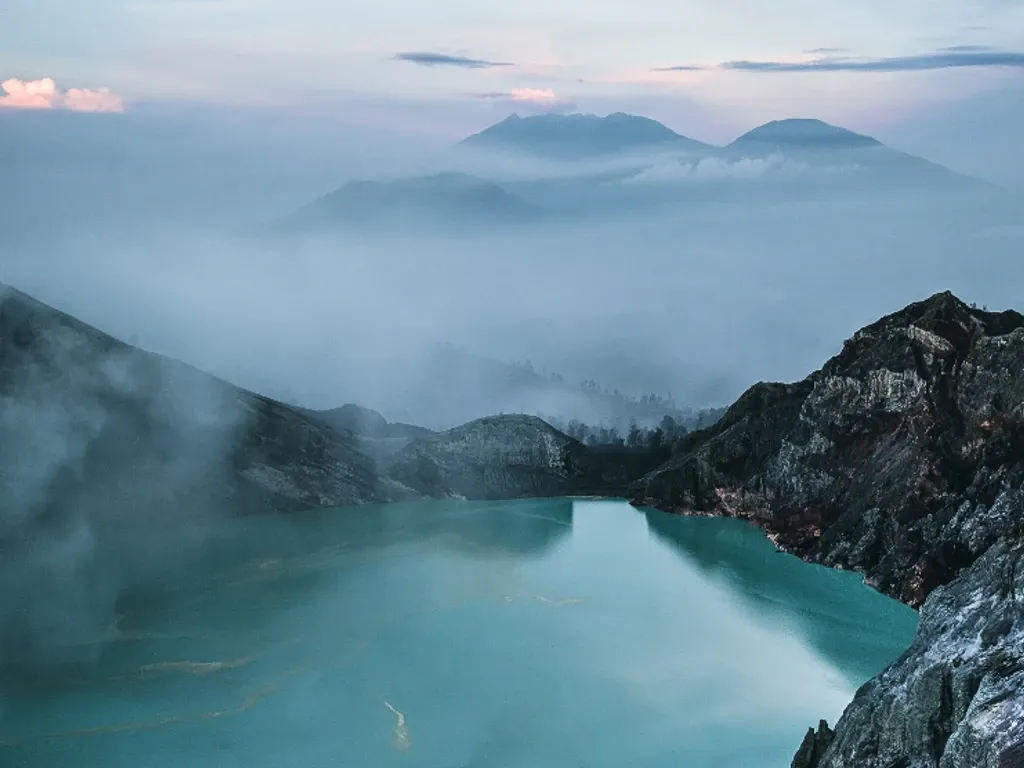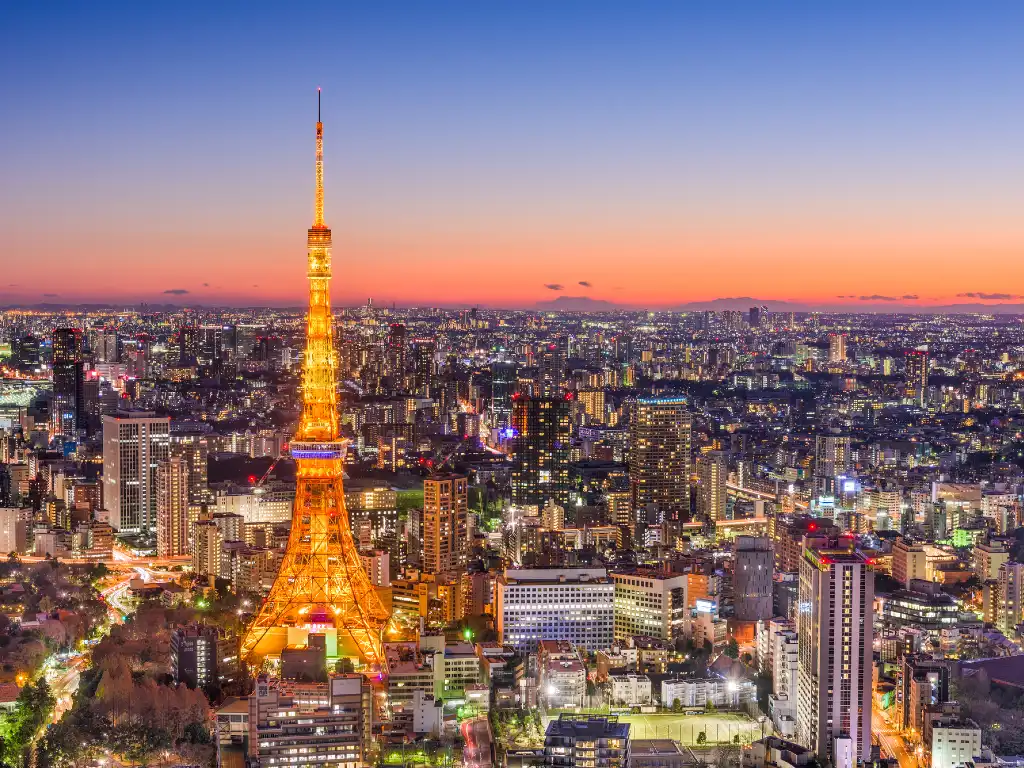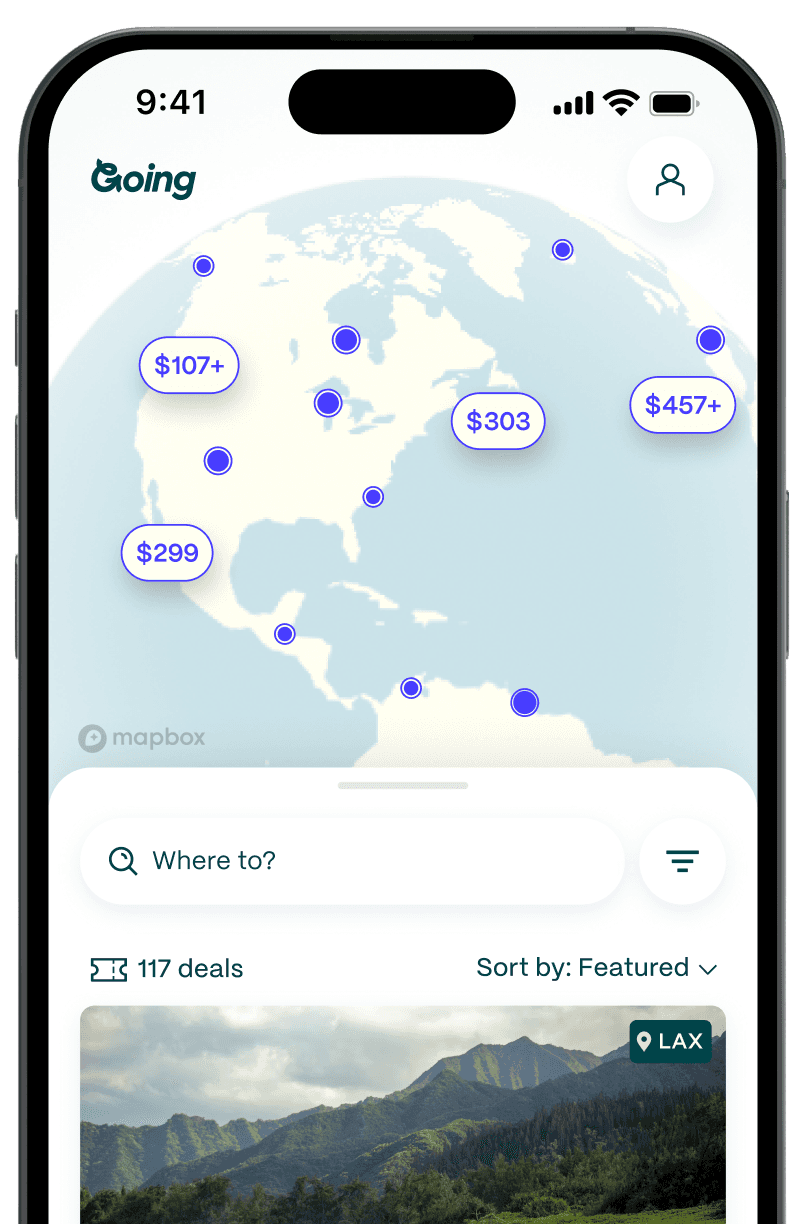
Mount Ijen: The Indonesian Volcano With Blue Lava and Sulfur Mines
It’s 5:30am. After four laborious hours maneuvering the steep, dusty slopes of Mount Ijen on the island of Java in Indonesia, I summit with a gas mask tightly secured to my face. An active volcano, working sulfur mine, and home to the largest acid lake on Earth, this alien landscape is about to ignite. As the morning sun crests the jagged ridgeline, the dark sky turns a pastel pink, and it’s as if someone has flicked on the light switch in the turquoise lake below me. Clouds of thick putrid smoke waft the stench of rotten eggs up from the depths of the crater walls. Yellowish stains color the gray rocks, marking the entrance to the sulfur mine, where just a few hours before I had watched electric-blue flames erupt, seemingly straight from the Earth's core.
Even considering the hostile environment—gusty, cold wind, toxic smoke, and acid lakes atop an active volcano—I was far from alone. The overnight hike on Ijen is justifiably one of the most popular attractions on the island. Because despite the harsh natural elements, it appeals both to bucketlist travelers hoping to catch a glimpse of the legendary blue flames, as well as those looking for a seriously epic sunrise.
The eastern side of Java is peppered with numerous active volcanoes, but Ijen is unique, as it produces ”devil’s gold”: sulfur. (Sulfur is commonly used in everyday goods like matches, cosmetics, and white sugar.) With an active sulfur mine bored into its crater, Ijen’s allure for locals is largely financial, but tourists are intrigued by a rare geological phenomenon—the blue fire that spews from the crater, as sulfuric gas ignites after breaching the surface. While the fire burns 24/7, the flames can only be seen at night, making it a prime attraction in the predawn hours.

If you've joined a guided group tour—and you should, as it’s an excellent way to both ensure your safety and support the local economy—the approximately-six-hour journey begins around midnight. Tour guides scoop up hikers from various accommodations and shuttle you to base camp; one of the most common points to set off from is the small village of Banyuwangi, making the shuttle ride just over an hour. At the foot of the mountain, guides light a campfire for warmth and give you a rundown on the trip ahead. They'll distribute gas masks, which you'll need to wear while descending into the crater to filter the sulfur fumes from the breathable oxygen, and provide you with helpful tips to utilize during the journey.
Many Ijen guides were former sulfur miners forced to make this climb daily, often without the protection of a gas mask, sunglasses, or suitable footwear. They piled upwards of 150 pounds of golden sulfur rocks into baskets on their backs, which left many of them with permanent scars and lasting lung damage. The guides know the trails like the back of their hand and will have no problem guiding you into the crater safely. While the gas mask provided by your guide will protect you, many of the men who still make the journey each day to mine sulfur cannot afford a mask; instead, they endure these dangerous conditions, purely because it’s a solid source of income, and because such lucrative work is hard to come by in this area. You’ll encounter many miners on your trek, and it’s important to always give them the right of way on tight trails and be respectful when taking photographs.

The 5.8-mile out-and-back trail is wide and covered with soft loose dirt. While it is steep, it doesn’t take more than two hours for the initial summit, and if the weather is on your side, the entirety of the hike will be beneath an enthralling canopy of stars. At the summit, you’ll decide: descend into the crater to see the acid lake and blue lava or stay on the high canyon wall to rest until dawn. Adventurous souls—like myself—will choose the former, carefully picking their footing on a much rockier, winding trail down the crater wall toward the mine entrance. Luckily, guides ensure you have ample time to explore the volcano, so if you opt to hike into the crater, you’ll be able to make it back to the summit for sunrise.
While the blue flames were mesmerizing, sitting on the edge of the crater overlooking the turquoise lake with a pastel-pink sky above me, the sheer magnitude of the landscape took my breath away. I took photos from every angle as the sky faded from pink to gold to blue, and soon the crowd, buzzing with good energy, began its descent to base camp—exhausted, covered in volcanic ash, and awed by the Earth’s spellbinding natural beauty.
Getting there
The nearest airport is Ngurah Rai International Airport (DPS) in Bali, Indonesia. To get from Bali to the volcano, take a taxi or Grab (Indonesia’s version of Uber) from the airport to Gilimanuk Ferry Port, then a short, cheap ferry to the island of Java. You’ll likely stay in the town of Banyuwangi; the majority of hotels can arrange a guide or group tour to Mount Ijen for you.
Average Going Flight Price: $932 roundtrip. See here for Going's flights to Bali
How to do it
- Best time to go: April-October, as this is Java’s dry season. While it is technically possible year round, the trail becomes muddy, making the already-challenging terrain even more difficult.
- Cost: To hike Ijen, you have to pay an entrance fee of about $7 (weekdays) or $10 (weekends). Tours booked through travel agencies and local hotels typically start around $40 per person and include transport between Banyuwangi and Ijen, gas masks, flashlights, and volcano entrance fees. Don't bother booking a private tour, as you'll be trekking with plenty of other hikers anyway.
- Safety considerations: While it is possible to do this hike on your own, a guided tour is highly recommended, as they provide you with the proper equipment and expertise to time your hike for sunrise. In addition to a gas mask and flashlight, you’ll want sunglasses—no matter the weather forecast—to protect your eyes from the fine ash and high winds. The acid lake is also incredibly dangerous, so steer clear of the water.
- Tips: Dress in layers. The weather can be unpredictable, but be prepared for cold and heavy winds, especially at the summit. If you’re too worn out to finish the hike, there are numerous local entrepreneurs selling rides in human-drawn wheeled carts that’d get you up or down the mountain in a pinch. (The pricing for these rides is not regulated, so be prepared to haggle.) You don’t need to book your tour more than a day in advance, and avoid weekends to escape the crowds.
More Asia destinations
More natural wonders around the world
Last updated December 19, 2023
Articles you might like
View All
Where to Stay in Tokyo: The Best Neighborhoods and Hotels in 2026
Dec 19, 2025
12 min read

Where To Stay in Seattle: Best Neighborhoods and Hotels for 2026
Dec 19, 2025
10 min read

Where To Stay in San Francisco: Best Neighborhoods and Hotels for 2026
Dec 19, 2025
17 min read






